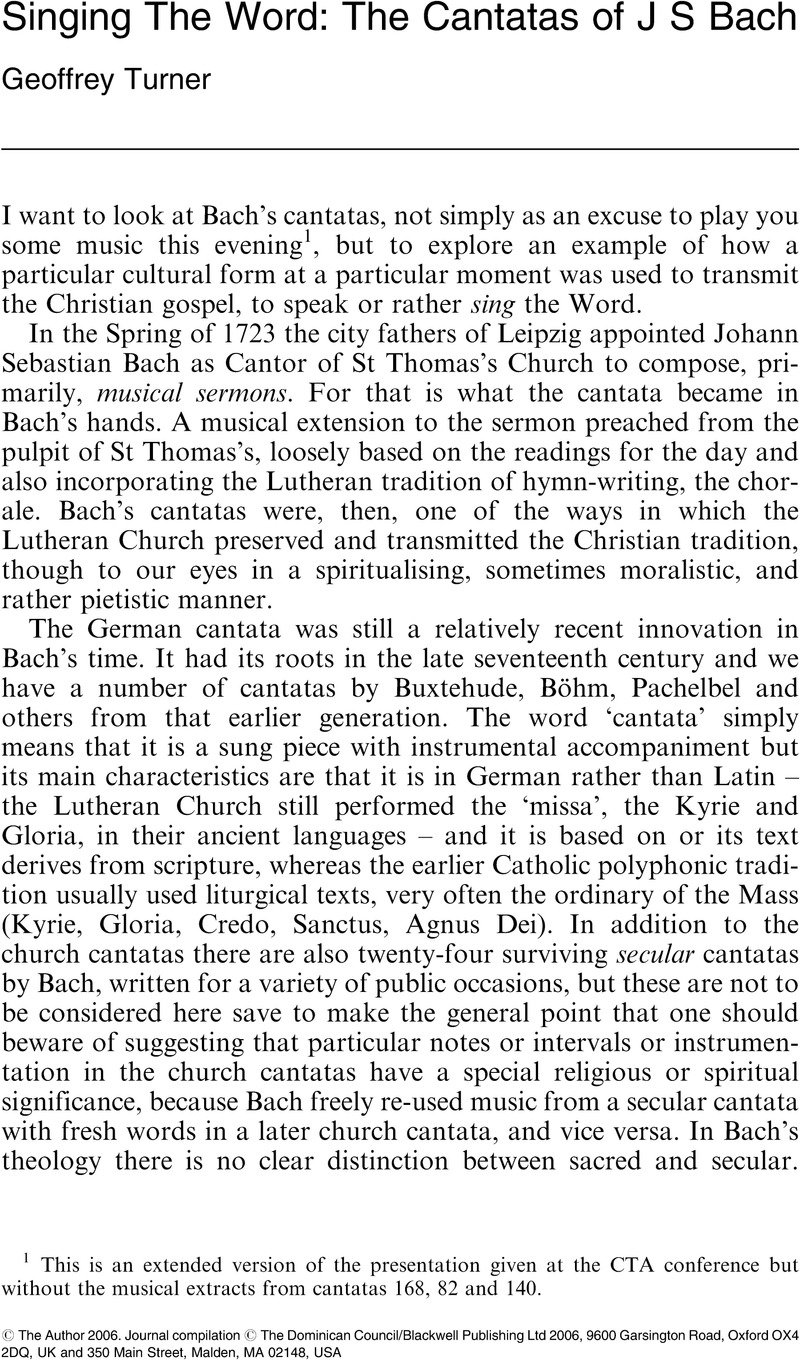Published online by Cambridge University Press: 01 January 2024

1 This is an extended version of the presentation given at the CTA conference but without the musical extracts from cantatas 168, 82 and 140.
2 There have been some recent experiments on disc, not altogether unsuccessful, of performing with just four singers, one to a part – even the Matthew Passion.
3 It is well known that Bach had twenty children but most died in infancy or early childhood which was normal before the twentieth century.
4 In his first year at Leipzig, Bach wrote thirteen two-part cantatas or paired cantatas for the same service: 75, 76, 21, 24 + 185, 147, 186, 179 + 199, 70, 181 + 18, 31 + 4, 172 + 59, 194 + 165, and 22 + 23.